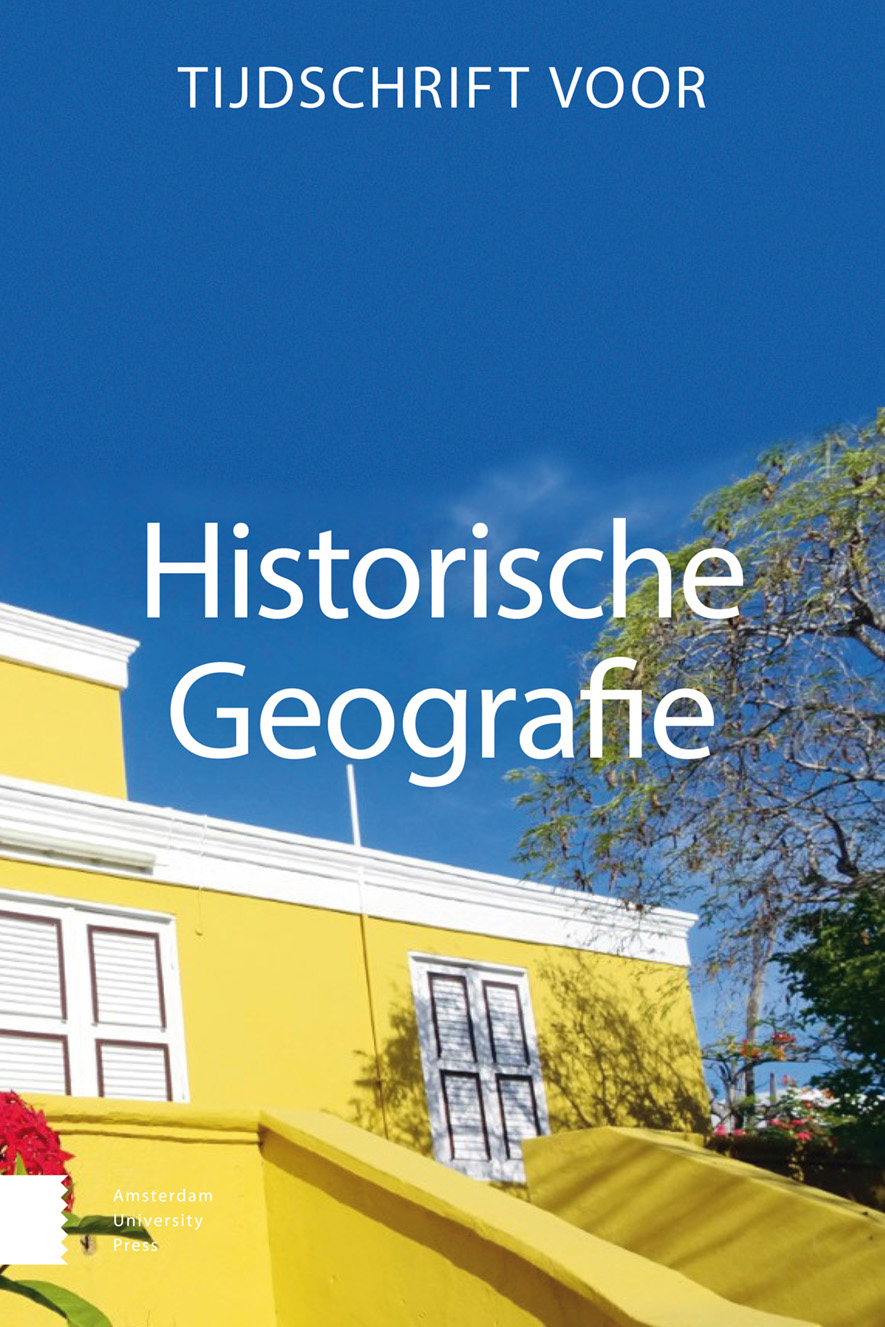- Home
- A-Z Publications
- Tijdschrift voor Historische Geografie
- Previous Issues
- Volume 7, Issue 1, 2022
Tijdschrift voor Historische Geografie - Volume 7, Issue 1, 2022
Volume 7, Issue 1, 2022
-
-
Middeleeuwse ijzer- en houtskoolproductie op de Veluwe
More LessAuthors: Theo Spek & Kimberley Kleine KoerkampAbstractMedieval iron and charcoal production in the Veluwe region Recent research on the iron production landscape in the coppice wood of ‘t Asselt near Rheden (Southeastern Veluwe)
Between the seventh and twelfth century ad large-scale iron production took place in the Veluwe region (Central Netherlands) based on the extraction of iron-rich loam concretions in the regional ice-pushed ridges. This iron production required large amounts of charcoal which were produced by the large-scale burning of semi-natural and/or coppice woods. There is palaeobotanical evidence that the woodland vegetation of the Veluwe diminished by two-thirds in this medieval period, partly because of medieval woodland reclamations, partly because of charcoal-burning. A master thesis project revealed the existence of an extensive and largely untouched iron production landscape in the coppice wood of ‘t Asselt (Southeastern Veluwe). Based on ceramics from the eighth-twelfth century, historical-geographical relics as well as written evidence this early and high medieval landscape layer seems rather complete and untouched, which makes it a very promising site for further archaeological research on medieval iron production landscapes.
-
-
-
500 jaar Zwolse markten in kaart gebracht
More LessAuthor: Niek BuchnerAbstract500 years of markets in the city of Zwolle mapped out
The city of Zwolle, originated on the river Aa, has a multifaceted economic history. Zwolle is primarily known for its status as Hanseatic town. But in its history, its position as a local economic market centre in the Salland region has been of equal importance. The growth and transformation of Zwolle from an agricultural settlement to a fully-fledged city with both local and (inter)national trade interests have left their mark on the urban structure. This article focuses on the links between the urban structure and various economic activities in the history of Zwolle. The shift in the various markets and economic centers of gravity in Zwolle in the period 1200-1700 is schematically mapped out.
-
-
-
Verdwenen bos opnieuw op de kaart
More LessAuthors: Gijs Eijgenraam, Bert Groenewoudt & Menne KosianAbstractVanished forest back on the map
Mapping woodland in the late medieval Netherlands based on the distribution of woodland-related place names
In the Netherlands plans are being developed to increase woodland substantially. But where? And what should new stretches of woodland be like to fulfill their intended functions? Historical information may help answering these questions. However, only for the period after 1850 detailed nation-wide cartographic information is available. Initiated by the Cultural Heritage Agency of the Netherlands (rce) a big data analysis was carried out on a national scale to gain insight in the distribution and character of woodland in the late medieval period (1000-1500). Starting point was a database containing all 6284 Dutch place names. Medieval place names that refer to (the use of) woodland in general or to specific types of woodland were selected and mapped. The resulting distribution shows interesting regional differences but is distorted and incomplete. The next step is to supplement it by using national inventories of ‘ancient woodland’, historically known medieval woods, archaeological data on medieval charcoal burning sites and perhaps also known sites of ‘ancient woodland’ plant species. Regional inventories of field names will then be used to validate resulting spatial patterns.
-
-
-
Stadsvernieuwing en stads- en dorpsgezichten in de periode 1961-1985
More LessAuthors: Anita Blom & Peter TimmerAbstractUrban renewal and historic urban landscape in the Netherlands, 1961-1985
Many urban sites and rural settlements suffered severely from dilapidation in the Netherlands after the Second World War. Urban renewal focused on large-scale demolition and modern urban development with highways, office buildings and commercial districts in the 1960s and 1970s. Following widespread protest by society, the revitalization of historical areas finally became a primary objective of urban renewal. To what extent and how this was achieved in relation to the 472 protected town- and villagescapes has not yet been studied. The Cultural Heritage Agency of the Netherlands is currently researching the post-1965 era and this has yielded new insights in that respect. Area-based and long-term planning, reviving inner-cities, community participation and the human dimension were key principles in achieving results. The European Architectural Heritage Year 1975 and the Declaration of Amsterdam introducing the concept of ‘integrated conservation’ was considerably influential in this matter. And this approach can still be topical looking at the major urban issues of today. The urban renewal period holds up a mirror to us: how to achieve sustainable urban development that serves an integrated perspective encompassing public, social, economic and cultural goals?
-
-
-
De oudste trekvaart van Nederland: de Grift tussen Arnhem en Nijmegen, 1610!
More LessAuthor: K.A.H.W. LeendersAbstractThe oldest draft canal in the Netherlands: the Grift between Arnhem and Nijmegen, 1610
Since De Vries’ publication Barges and capitalism (1981), the general opinion is that the oldest draft canal (Dutch: trekvaart) in the Netherlands was built between Amsterdam and Haarlem in 1631. But this is not true! In 1610 a 14-kilometer-long draft canal, the Grift, was already put into use between Arnhem and Nijmegen. It was even possible to transfer in Nijmegen to a barge that sailed to Holland. This was a direct connection of the Grift with the traffic system of the province of Holland. The Grift was filled in during the 1930s but its course is still recognisable in the present road.
-
Most Read This Month


